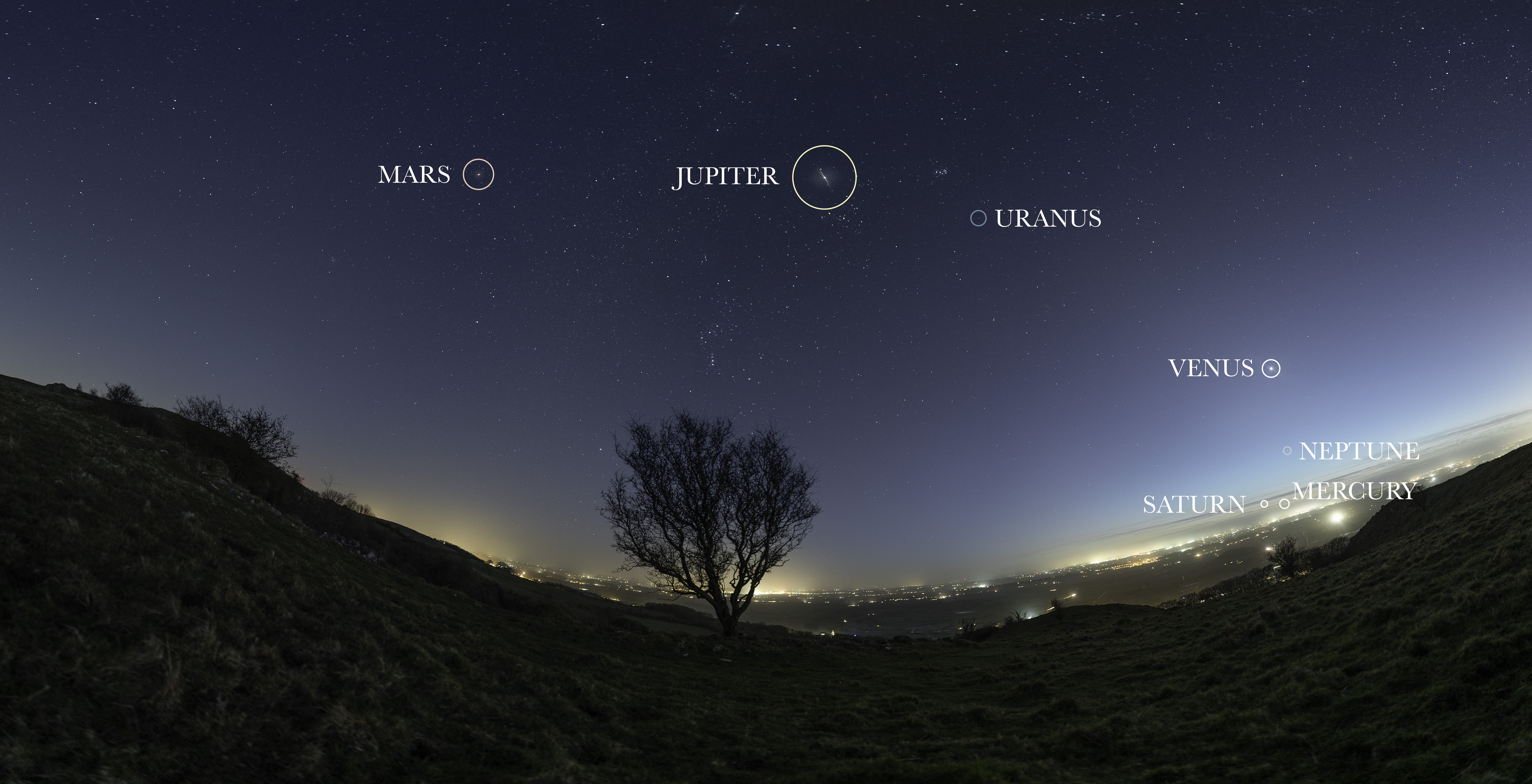
Astrophotographer Josh Dury captured this stunning photograph of the seven-planet alignment on Feb. 22 from the Mendip Hills, Somerset, U.K.
"A fantastic, yet challenging photographic opportunity to observe all planets during a small window in time," Dury told Space.com in an email.
Currently, skywatchers have a rare opportunity to witness this planetary parade in the evening sky, with seven planets aligned. For most, three of the brightest planets — Venus, Jupiter and Mars — will be easily visible to the naked eye. Those with a clear unobstructed view of the horizon may also be able to spot Saturn and Mercury, while Uranus and Neptune can be spotted with binoculars, a small telescope, or in Dury's case — a very well-positioned and timed photograph!
Dury's efforts were rewarded with a stunning panoramic view of the night sky containing seven planets. But it was no easy feat.
"A difficult capture with planets: Mercury, Saturn and Neptune being in close proximity to the sun," Dury told Space.com.
To capture these three planets Dury captured a panorama of several "panes". For the "pane" that captured Mercury, Saturn and Neptune, Dury used two multiple exposures; the base of the panorama and another with increased exposure and ISO to try and capture the light from the dimmer planets. Dury then matched with plain sphere maps to confirm their position.

"Being close to the sun and in the attempt to photograph them as soon as they were readily visible, the relative positions of these three planets are slightly misaligned due to their approximate visibility from the imaging location and low western cloud," Dury explained.
Dury used a Sony A7S II and Sigma 15mm Diagonal Fisheye to capture the image.
While planetary alignments like this aren't exceedingly rare, they are uncommon enough to make for a breathtaking sight — one that won't be seen again until late October 2028.
If you haven't been able to catch a glimpse of the planetary parade yet do not worry, there is still time this month (though Saturn, Mercury and Neptune are becoming increasingly difficult to spot).
The easiest way to see the planetary lineup is to head outside at dusk and find Venus, the brightest and most conspicuous of the planets, shining in the west-southwest sky. From there, you can trace a gentle arc along the ecliptic (the line or plane that all the planets trace through the sky) to locate the other planets. Jupiter will be high in the south, Mars will blaze in the east near the Gemini twins, and Mercury and Saturn will require a clear, unobstructed view of the horizon. For those with binoculars, Uranus and Neptune provide an extra challenge. Uranus, with its faint greenish glow, can sometimes be seen without optical aid under dark skies, while Neptune requires a telescope to distinguish its distant blue disk.
If you're looking for a telescope or binoculars to observe the night sky, our guides for the best binoculars deals and the best telescope deals now can help. Our best cameras for astrophotography and best lenses for astrophotography can also help you prepare to capture the next skywatching sight.







